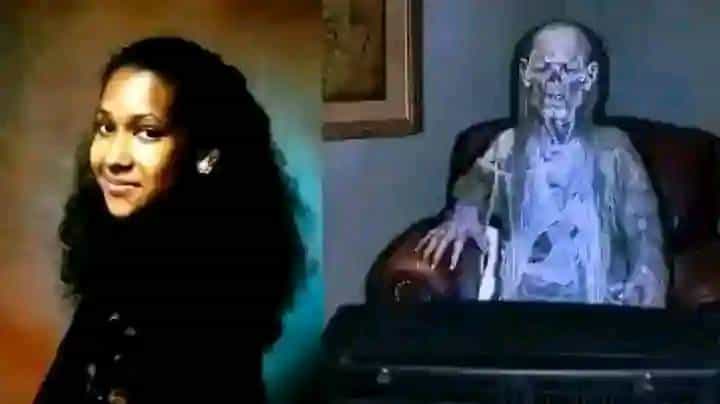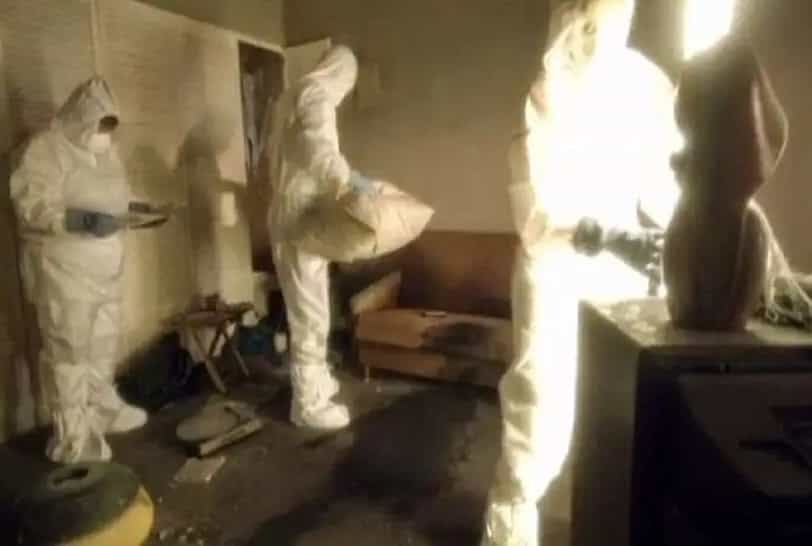The Tragic Story of Joyce Vincent: The Woman Who Died Alone and Went Unnoticed for Two Years

Joyce Carol Vincent was a 38-year-old woman living in London. She had a family, friends, and a life that seemed ordinary. But her story took a heartbreaking turn when she died in her apartment, and no one noticed for over two years.
How could someone with connections and a seemingly normal life end up forgotten for so long? Let’s explore the tragic and mysterious tale of Joyce Vincent.
The Discovery of Joyce Vincent’s Body
Imagine walking into an apartment. The TV is still on, playing BBC1. There’s a pile of unopened mail by the door, dishes in the sink, and even wrapped Christmas gifts waiting to be sent out. This was the scene when officials from a housing association in North London entered Joyce Vincent’s apartment on January 5, 2006. They were there to repossess the apartment because the rent hadn’t been paid.
But they found something far more shocking. Joyce Vincent was there too—her body lying on the floor, mostly decomposed. She had been dead for over two years, likely since December 2003. Her remains were so badly decayed that she could only be identified through dental records. The police ruled out foul play and suggested she died of natural causes, possibly due to her asthma.

How Did No One Notice?
The most haunting question is: how could someone die and remain unnoticed for so long? Joyce Vincent wasn’t a recluse or someone without connections. She had family, friends, and a history of working in good jobs. Yet, her absence went unnoticed for two years.
Neighbors didn’t know her well. They occasionally noticed a bad smell but assumed it came from the garbage bins below her apartment. Her family and friends hadn’t heard from her in years, and no one thought to check on her. It’s a chilling reminder of how easily someone can slip through the cracks, even in a bustling city like London.
Who Was Joyce Vincent?
Joyce Carol Vincent was born on October 19, 1965, in Hammersmith, London. She was the youngest of five sisters, but her mother passed away when she was young. Her father worked as a carpenter, and the family struggled financially. Despite this, Joyce grew up to be a hardworking and ambitious woman.
She worked for Ernst & Young, a well-known accounting firm, but quit in 2001 without explanation. Colleagues had conflicting stories about her departure. Some said she left to travel, while others thought she had been offered a better job. After leaving the firm, Joyce’s life took a downward turn. She spent time in a shelter for victims of domestic violence and moved frequently, living in different parts of London.
A Life of Isolation
Joyce Vincent’s life was marked by isolation. She drifted away from her family and didn’t maintain close friendships. According to reports, she relied on the company of strangers—new boyfriends, colleagues, or flatmates—but never formed lasting connections. Her sister tried to reach out, but Joyce often ignored her calls.
Martin Lister, a former boyfriend who dated Joyce for three years, described her as a hardworking and independent woman. He was shocked to learn of her death and regretted not staying in touch. “You look back and think, I wish I’d asked more, wish I’d understood more,” he said.
The Documentary: Dreams of a Life
Joyce Vincent’s story caught the attention of filmmaker Carol Morley, who was deeply moved by the tragedy. Morley directed a documentary called Dreams of a Life, which explored Joyce’s life and the circumstances surrounding her death. Through interviews with people who knew Joyce, the documentary painted a picture of a woman who was vibrant and ambitious but struggled with loneliness and isolation.
The film revealed that Joyce had a habit of cutting ties with people and starting over. She often left jobs abruptly and moved to new places without explanation. While she appeared confident and outgoing on the surface, her life was far more complicated than anyone realized.
The Irony of Modern Connectivity
Joyce Vincent’s story is especially poignant in today’s world, where social media keeps us constantly connected. It’s hard to imagine someone disappearing for two years without anyone noticing. Yet, Joyce’s life shows that even in a world of constant communication, people can still feel alone and forgotten.
Her story also highlights the importance of checking in on loved ones. It’s easy to assume that someone is doing fine, especially if they seem independent or distant. But Joyce’s tragic death reminds us that everyone needs connection and care.
Joyce Vincent’s story is both heartbreaking and thought-provoking. It’s a stark reminder of how easily someone can be forgotten, even in a world that’s more connected than ever. Her life was filled with ambition and potential, but it was also marked by loneliness and isolation.
As we reflect on her story, let’s remember the importance of reaching out to others and building meaningful connections. Joyce Vincent’s tragic death should inspire us to be more compassionate, more aware, and more present in the lives of those around us. After all, no one should have to die alone and unnoticed.
FAQs About Joyce Vincent’s Tragic Story
1. Who was Joyce Vincent?
Joyce Carol Vincent was a 38-year-old woman living in London. She was born on October 19, 1965, in Hammersmith, London, and was the youngest of five sisters. She worked for Ernst & Young, a prestigious accounting firm, but left her job in 2001 under mysterious circumstances.
2. How did Joyce Vincent die?
Joyce Vincent died in her apartment in December 2003. Her body was discovered in January 2006, over two years later. The exact cause of death couldn’t be determined due to the advanced state of decomposition, but police ruled out foul play and suggested she likely died of natural causes, possibly related to her asthma.
3. Why did it take so long for anyone to notice she had died?
Joyce Vincent lived a relatively isolated life. She had drifted away from her family and didn’t maintain close friendships. Her neighbors didn’t know her well, and the bad smell from her apartment was mistaken for garbage. Additionally, her rent was paid automatically, so her absence went unnoticed by her housing association until the payments stopped.
4. What was Joyce Vincent’s life like before her death?
Joyce Vincent had a successful career at Ernst & Young but left her job in 2001. After that, her life became unstable. She moved frequently, spent time in a shelter for domestic violence victims, and relied on temporary relationships with boyfriends, colleagues, or flatmates. She was described as independent but struggled with loneliness and isolation.
5. How was Joyce Vincent identified after her death?
Because her body was mostly decomposed, Joyce Vincent was identified through dental records. Her remains were skeletal, making it impossible to determine the exact cause of death.
6. What is the documentary Dreams of a Life about?
Dreams of a Life is a documentary directed by Carol Morley that explores Joyce Vincent’s life and the circumstances of her death. The film includes interviews with people who knew Joyce, such as former boyfriends and colleagues, to piece together her story and understand how she could have been forgotten for so long.
7. Why did Joyce Vincent isolate herself from her family and friends?
Joyce Vincent’s reasons for isolating herself are not entirely clear. Some speculate that her isolation was linked to a troubled relationship or personal struggles. She had a habit of cutting ties with people and starting over, which may have contributed to her loneliness.
8. What lessons can we learn from Joyce Vincent’s story?
Joyce Vincent’s story highlights the importance of human connection and checking in on loved ones. It reminds us that even in a world of constant communication, people can still feel alone. Her tragic death serves as a call to be more compassionate and aware of those around us.
9. How did Joyce Vincent’s former boyfriend react to her death?
Martin Lister, a former boyfriend who dated Joyce for three years, was shocked to learn of her death. He described her as a hardworking and independent woman and expressed regret for not staying in touch. He wished he had asked more questions and understood her struggles better.
10. Why is Joyce Vincent’s story so significant today?
Joyce Vincent’s story is significant because it sheds light on the issue of social isolation, even in a hyper-connected world. It serves as a reminder that no one should have to die alone and unnoticed. Her story encourages us to prioritize meaningful relationships and look out for one another.
11. Was Joyce Vincent’s death investigated?
Yes, the police conducted a criminal investigation but found no evidence of foul play. They concluded that Joyce likely died of natural causes, possibly due to her asthma.
12. How did Joyce Vincent’s family react to her death?
Joyce Vincent’s family was unaware of her death until her body was discovered. She had isolated herself from them in the years leading up to her death, and they were devastated to learn what had happened.
13. What happened to Joyce Vincent’s apartment after her death?
Joyce Vincent’s apartment was repossessed by the housing association due to unpaid rent. When officials entered the apartment, they found her body along with the TV still on, unopened mail, and wrapped Christmas gifts.
14. How can we prevent tragedies like this from happening?
To prevent similar tragedies, it’s important to:
- Stay in touch with loved ones, especially those who may be isolated.
- Build strong community connections with neighbors and colleagues.
- Be aware of signs that someone may be struggling, even if they seem fine on the surface.
- Encourage open conversations about mental health and loneliness.
15. What is the legacy of Joyce Vincent’s story?
Joyce Vincent’s story has become a symbol of the dangers of social isolation and the importance of human connection. Her tragic death has inspired discussions about loneliness, mental health, and the need for stronger community ties. It serves as a powerful reminder to care for one another and not let anyone slip through the cracks.
